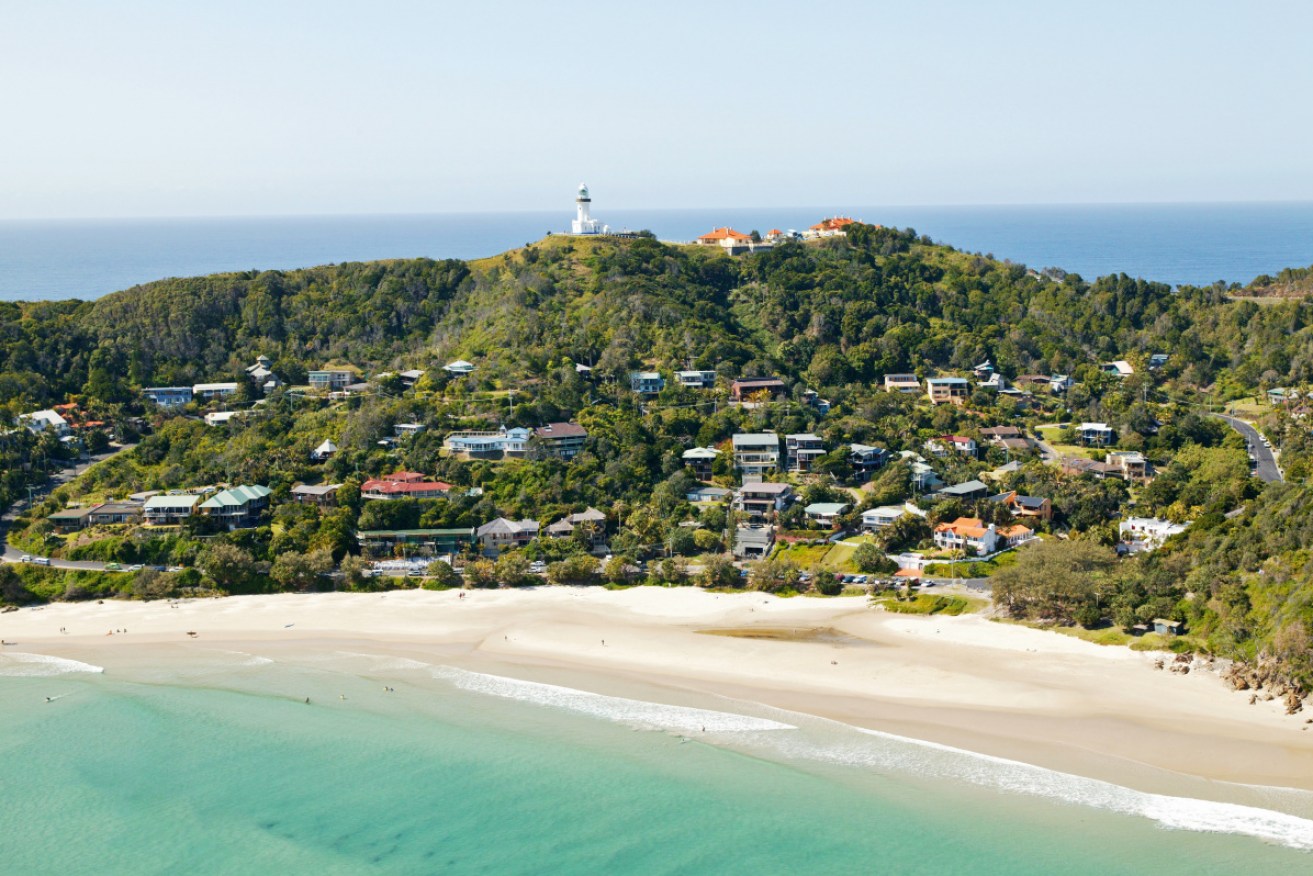Idyllic regional areas come with stratospheric house price rises


Home to idyllic beaches and Hollywood A-listers, Byron Bay has seen house prices soar. Photo: Getty
Although the pandemic contributed to higher house prices around Australia, an expert says lifestyle shifts before COVID-19 caused the biggest price hikes over the past decade.
Data from valuation platform PropTrack reveals the top 10 towns where median house prices have increased by more than 200 per cent since 2013.
New South Wales’ Byron Bay tops the list as median house prices jumped almost 362 per cent, or $2.35 million, over the past 10 years to reach $3 million.
In contrast, the national median home value was $704,723 as of March, according to CoreLogic.
One connecting factor between the suburbs that saw Australia’s biggest price hikes was their reputation as peak lifestyle areas, well regarded for coastal or parkside living.
McCrindle Research social researcher Geoff Brailey said the appeal of lifestyle locations and sister cities to capital cities comes down to a mix of “iconic” natural amenities like beaches and bushland, along with cultural prestige such as a surfing culture and festivals.
Although COVID lockdowns and social-distancing measures hastened a mass tree change, with many Australians swapping city centres for more suburban settings, Mr Brailey said the shift towards these regions preceded the pandemic.
“People were already moving to Wollongong out of Sydney, and moving to Geelong out of Melbourne, Sunshine Coast out of Brisbane, and then that’s been enhanced during COVID,” he said.
“I think the destination aspect is key. These are not just tourist locations, these are incredible places to live, that have a green edge to them.
“Places like Byron, quite an alternative, surfy, almost drop-out culture back in the ’70s and ’80s, now has become a world-class sustainability culture … that’s very supportive of local producers, growers and suppliers.”
Mr Brailey said Baby Boomers looking for their ideal retirement homes are likely one of the major groups of buyers driving up prices.
This is largely due to the older generation’s greater accumulation of wealth, with the average wealth of households with a person aged 65 years or over sitting at $1.5 million in 2017-18 – 1.5 times that of younger households.
“There are certainly going to be people far exceeding that [average] wealth who have money to spend on luxury living,” Mr Brailey said.
“These places are where you see the lifestyle acreage properties that have no expense spared.”
Millennials might be falling victim to the “fading dream” of home ownership in the face of inflation, but he said this generation will also likely be aiming to enter the upscale markets sooner.
“For younger generations when it comes to property, they want to start with not just a small two-bedroom apartment – they want to have lifestyle properties from the very beginning.
“We’re delaying having children, we’re getting married later, and we’re studying longer to be able to earn more so that we can have that quality of life, which I think has been a bit of a beacon of Australian culture.”
Mr Brailey said we can expect to see trends towards suburban living continue as Australians place quality of life over inner-city living.








